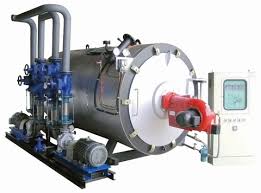
Сен . 06, 2024 02:16 Back to list
Steam Boiler Sizing Guide | Optimize Your Steam System Efficiency
Steam Boiler Sizing A Comprehensive Guide
When it comes to steam systems, proper boiler sizing is essential for ensuring efficiency, reliability, and safety. An adequately sized steam boiler can improve the overall performance of a heating system, while an oversized or undersized boiler can lead to energy wastage, increased operational costs, and frequent maintenance issues. This article outlines the key considerations needed for effective steam boiler sizing.
The first step in sizing a steam boiler is to determine the steam demand of the system. This involves assessing all the equipment and processes that will utilize steam. Factors to consider include the heat load, steam pressure, and the specific needs of each application. For example, industrial processes may require high-pressure steam for efficient operations, while commercial heating systems may need low-pressure steam for comfort heating.
Once the steam demand is established, the next step is to consider the boiler’s rated output. Boiler output is typically measured in pounds of steam per hour (lbs/hr) or horsepower (HP). To accurately size the boiler, it is crucial to ensure that its output matches or exceeds the calculated steam demand. An insufficiently sized boiler will struggle to meet the required demand, resulting in fluctuating temperatures and significant operational disruptions.
steam boiler sizing

In addition to output, efficiency ratings play a crucial role in boiler sizing. The efficiency of a steam boiler, often expressed as a percentage, indicates how much of the energy used is converted into usable steam. High-efficiency boilers not only save on fuel costs but also reduce emissions, making them an environmentally friendly choice. It’s essential to consider the boiler’s efficiency rating when performing calculations to determine the appropriate size.
Another factor to consider is the boiler’s operating conditions, including ambient temperatures and altitude. Higher elevations can affect boiler performance due to changes in atmospheric pressure, requiring adjustments in size to maintain the desired steam output. Moreover, seasonal variations in demand should also be taken into account. If the heating requirements vary significantly throughout the year, a modular boiler system may be advisable to avoid inefficiencies.
Furthermore, it is essential to incorporate safety margins into your sizing calculations. This can mitigate the risk of operational issues during peak demand. A boiler with a slight overcapacity can accommodate sudden spikes in steam requirements without compromising performance.
In conclusion, steam boiler sizing is a multi-faceted process that requires careful analysis of various factors, including steam demand, boiler output, efficiency, operating conditions, and safety margins. By thoroughly evaluating these elements, facility managers and engineers can ensure they select the right steam boiler for their needs, optimizing energy use and maintaining system integrity over the long term.
-
Efficient Biomass Fired Hot Water Boiler | AI Heating Solution
NewsAug.01,2025
-
High-Efficiency Gas Thermal Oil Boilers | HPT Models
NewsJul.31,2025
-
Oil Fired Hot Water Boilers Sale - High Efficiency & Affordable
NewsJul.31,2025
-
High-Efficiency Commercial Oil Fired Steam Boiler for Industry
NewsJul.30,2025
-
High-Efficiency Biomass Fired Thermal Oil Boiler Solutions
NewsJul.30,2025
-
High Efficiency Gas Fired Thermal Oil Boiler for Industrial Heating
NewsJul.29,2025
Related PRODUCTS






















